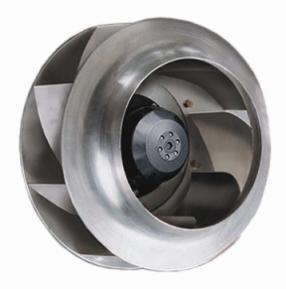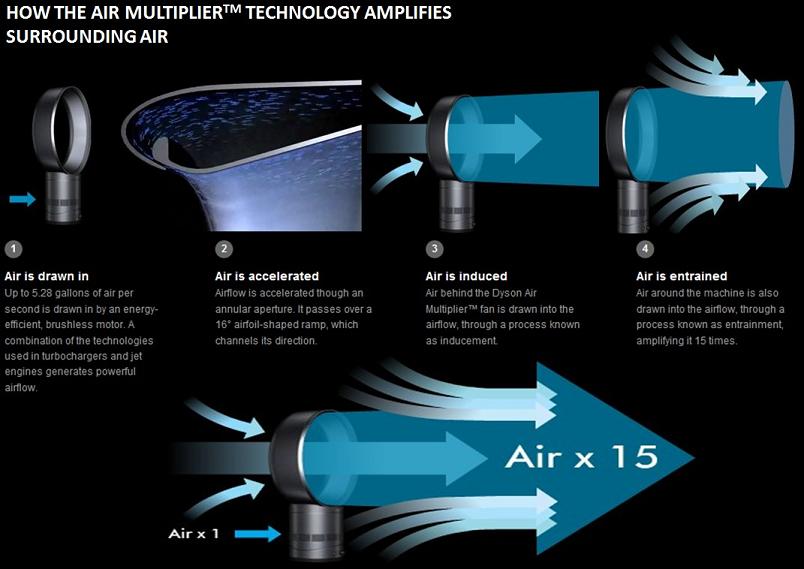THE CHALLENGE
Electric fans haven’t changed since they were invented in 1882. Different materials, new buttons and the addition of grills, but still the same problem – the blades chop the air before it hits you. That’s why they cause unpleasant buffeting. The solution? Take the blades out, and the buffeting stops. But how can a fan work without blades?

THE SOLUTION
Dyson engineers started with pressurized air, forcing it through narrow apertures to create jets. But they needed it to be more powerful to work in a fan. The breakthrough came when they noticed that accelerating air over a ramp amplified it by 10 – 20 times, drawing in surrounding air through processes known as inducement and entrainment (think of an airplane wing). Hundreds of iterative tests revealed the ideal ramp angle, aperture width and loop amplifier dimensions.

Example of an impeller

ADVANTAGES
- No blades makes it the safest fan on the market
- Light and easy to move and adjust
- No blades makes it the safest fan on the market
- Light and easy to move and adjust

 15:33
15:33
 Vestroia
Vestroia